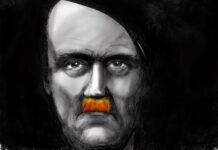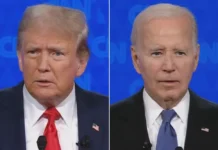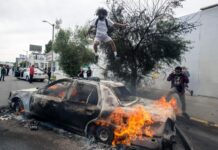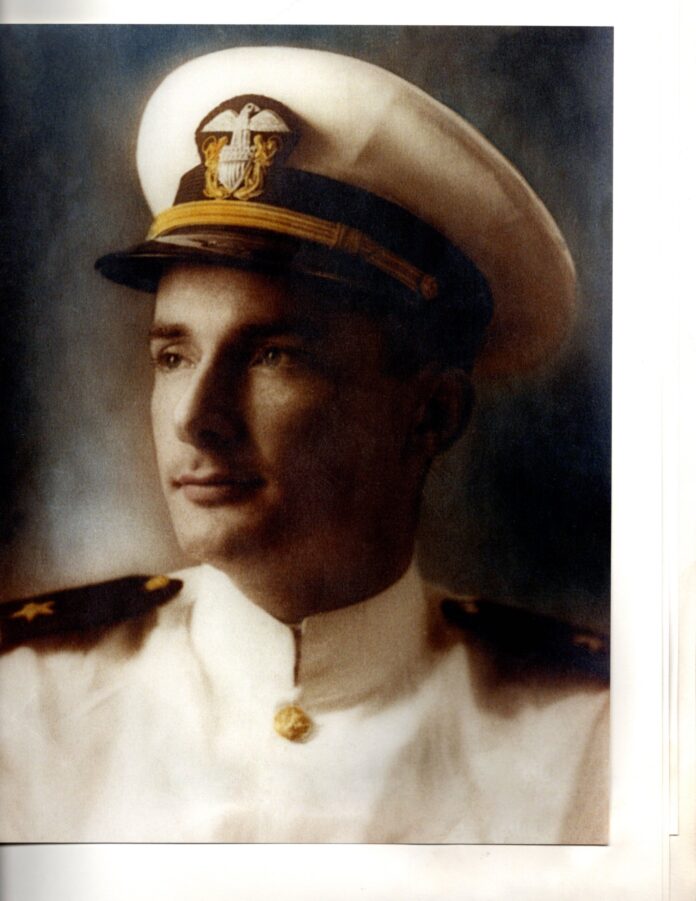
Eighty years after my Great Uncle William W. Creamer gave his life at the Battle of Midway as a pilot in Torpedo Squadron 8, I ponder what he would think of the nation today for which he died
By Mark Cromer
On the morning of June 4, 1942, my Great Uncle William Wilson ‘Buddy’ Creamer launched his Douglas TBD Devastator off the flight deck of the USS Hornet into the vast expanse of the Pacific Ocean some 1,500 miles west of Hawaii and, along with the fourteen other planes of the U.S. Navy’s Torpedo Squadron 8, he flew into American history.
It’s the history of America since his fateful flight in June 1942 that has me wondering what he would think today of the country he died defending.
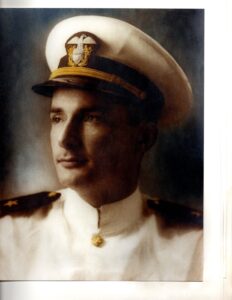
Just 25-years-old at the time, my ‘Uncle Buddy’ had joined the Navy in 1939 and was commissioned as an Ensign a year before the Japanese attack on Pearl Harbor. The only son among the five children that my maternal great grandparents had, he was born in Pennsylvania to a family whose roots in the Keystone State pre-date the Revolutionary War (and whose ancestors served in it) as the slaughterhouse of World War I was well underway. By the time the winds of war were once more blowing across Europe and Asia in the 1930s, my family had moved, as so many others had during the Great Depression, to the then still lush promised land of California, settling on a farm in Riverside, some fifty-five miles east of Los Angeles.
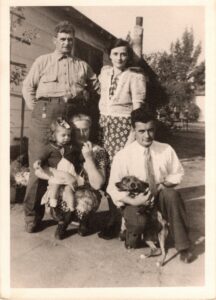
When the Hornet set sail for Midway from Pearl Harbor on May 28 to join its sister Pacific Fleet carriers Enterprise and Yorktown, she was taking part in what would become one of the most strategically important naval ambushes in military history. Since the attack on Pearl Harbor less than six months earlier, America and her allies in Asia and throughout all of the major theaters of combat were effectively on the ropes. The Germans had recovered from their failed lunge at Moscow in the winter of 1941 and were once more rolling deep across the steppe east of Moscow toward their date with destiny at Stalingrad and into the oil-rich Caucasus.
In North Africa, the ‘Desert Fox’ Erwin Rommel was once more on his way back to Tobruk.
In Asia, the Japanese conquest by June of 1942 was nothing short of staggering, with the Imperial Japanese Navy and Army having rolled up huge swathes of China along with real estate that included Korea, Formosa (Taiwan), Inner Mongolia, French Indochina (Vietnam), Malaya, Thailand, Burma (Myanmar), the Philippines, the Dutch East Indies (Indonesia) and the Japanese had sliced through New Guinea well on their way to Australia. And those were just the marquee plums in what Japan had planned for her euphemistically entitled: ‘Greater East Asia Co-Prosperity Sphere.’
Granted, it didn’t have quite the same ring that the German’s marketing department came up with for its ‘Greater Reich’ brand or its more Satanic episodic series ‘The Final Solution,’ but that was cold comfort to the residents of Nanking or anywhere else Hirohito’s Rising Sun suddenly dawned.
Make no mistake about it, the Axis was a global horror show, one that was armed to the teeth and in 1942 still had momentum on its side.
These were the cold, hard facts that my Uncle Buddy and his fellow pilots flew into on that early June morning, piloting torpedo planes that had rolled off the Douglas Aircraft Company’s assembly lines starting in the mid-1930s and by 1942 were considered to be virtual death traps, rather slow tin cans that were armed with a thirteen-foot torpedo that as often as not proved to be a dud.
Not exactly a morale builder for the men behind the stick.
And yet, regardless, they flew into battle.
The Yorktown had been mauled by the Imperial Japanese Navy at the Battle of Coral Sea in early May 1942—so badly damaged that the Japanese were convinced she had indeed been sunk—but in fact she had managed to stay afloat and limped back to Pearl Harbor where engineers estimated that repairs would take upwards of three months to restore her fighting prowess. Evidently, the Navy had a different schedule. Forty-eight hours later, the Yorktown put back out to sea to join the naval task force that Uncle Sam had decided to roll for broke with in the hope of catching the Imperial Japanese Navy by surprise after they determined (or more likely prayed) that they had cracked the Japanese signals intelligence and knew what Admiral Isoroku Yamamoto had in mind.
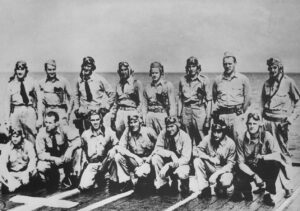
Along with the cover of a feint by the Japanese into the Aleutian Islands—in which the Japanese overwhelmed and occupied the islands of Attu and Kiska—Yamamoto sent a massive naval force to Midway that, in sheer firepower, outgunned the Americans in fleet carriers, support carriers and much worse in other capital ships.
What Yamamoto didn’t know was that the Americans were waiting for him.
The ensuing battle is now rightly the stuff of legend, at least among Americans of a certain age. But the short of it is that our aviators caught the Japanese fleet more or less by surprise and in short order sent four of their fleet carriers to the bottom versus the lone carrier loss of the Yorktown for the Americans—a stunning blow from which Tokyo would never truly recover.
But my Uncle Buddy and his compatriots in Torpedo Squadron 8 not only didn’t sink a single Japanese carrier, they never even hit one. And yet their role in the Battle of Midway was absolutely crucial: without supporting fighter coverage and running out of fuel, they attacked the Japanese carriers through a screen of Zeros and the barrage of anti-aircraft ‘pom-pom’ guns blazing away from the Japanese destroyers, cruisers and battleships that accompanied the Japanese carriers. All fifteen planes of the squadron led by Lieutenant Commander John C. Waldron were shot down by the Japanese, killing all but the sole survivor of Ensign George C. Gay Jr., who was later rescued by a passing PBY Catalina.
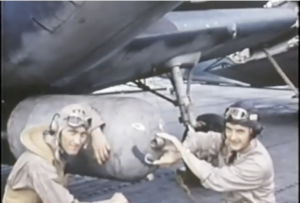
Though they never scored a hit, their attack kept the Japanese fleet’s fighter screen in the air longer than expected and further scrambled the Japanese carrier crews which had been fatally ordered to switch their planes from land-oriented bombs for an impending additional attack on Midway Island to bombs intended for American carriers which the Japanese discovered too late were on the scene. After Torpedo Squadron 8 had been sent into the sea by the Japanese, the Japanese fighter screen began to run out of fuel and forced their commanders to either allow them to land or watch them ditch like dying flies in the ocean around their carriers.
As the Japanese furiously rearmed their planes below deck and frantically brought their fighter screen down to refuel, American dive-bombers appeared overhead and proceeded to rain death upon one of the world’s mightiest naval forces. In relatively short order, four Japanese fleet carriers were wiped off the face of the water and Yamamoto’s second gambit to knock America out of the Pacific theater had not only ended in crushing defeat—as the Russians would deliver to the German 6th Army less than six months later on the Volga—but along with the American and British landings in North Africa that fall of 1942 would mark the turning point of World War II irrevocably against the Axis.
As I grew up in the 1970s, my Uncle Buddy remained in my family as he should have: a matter of love, pride and lore. My maternal grandmother’s brother had answered his nation’s call and, in his ultimate sacrifice, he turned his modest, hardscrabble white working-class parents into a Gold Star family. This was not what they wanted, of course. It was certainly their greatest fear, one they could never truly prepare for, but they accepted that the risk of such a nightmarish loss was what was required given the stakes of the global warfare that Nazi Germany, Fascist Italy and Imperial Japan had unleashed.
Along with nearly 300,000 other American families, they became parents who received news of their son’s death half a world away via Western Union. A telegram that arrived at their door from the Secretary of War that began with the dreaded line: “We regret to inform you…”
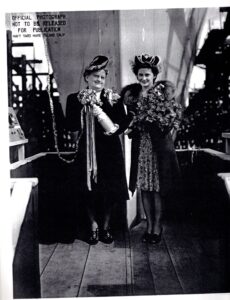
For his ultimate sacrifice, my Uncle Buddy was posthumously awarded the Navy Cross and had a United States Navy destroyer named in his honor in 1944. The USS Creamer was christened by his mother, but as the war rolled to an end it never formally sailed and was later scrapped along with much of the massive fleet the U.S. Navy was assembling in preparation for the invasion of Japan.
My Uncle Buddy was a valiant man and a committed warrior for his nation and accordingly I was raised to understand and respect that, indeed to relish it as something that was vitally important as to who we were as a family and as Americans. The photos and film that the War Department (now the Department of Defense) and the U.S. Navy had sent to my family over the years were treated with the reverence they deserved and throughout the 1970s my mom would take my brother and I out to see Uncle Buddy’s mom, my great grandmother, at the Eastern Star Home, an iconic Masonic residence for seniors in Brentwood that was designed by California architect William Mooser. The Eastern Star was built in 1931 at 11725 Sunset Boulevard on a stretch of the fabled boulevard where it winds west from Bel-Air down through Pacific Palisades and to its terminus at the Pacific Coast Highway.
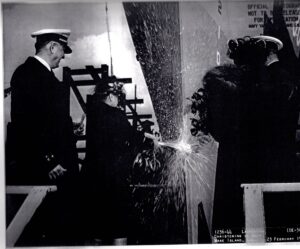
As a kid, my Uncle Buddy’s lore and legend aside, I was never really too keen to see my Great Grandmother Dora Creamer (born Dora Elizabeth Weber on September 28, 1884) as she slowly faded over the horizon inside the classic Spanish Colonial style building that, as beautiful as it was, still wafted with the aroma of disinfectant and impending death. While considered a very fine ‘old folks’ home of its era, even as a kid the cumulative indignities that advanced age brings was inescapable to me; from her physical frailty to her small and somewhat monastic room (which at least was hers alone) to her ever-present sense that the nursing staff was somehow stealing from her.
My youthful discomfort at the sad spectacle of old age aside, there were things about all those visits that spanned the 1970s—an American decade that will be recalled mostly for its sense of national decline and celebration of casual decadence—that I was very glad to have experienced. Hearing my great grandmother talk to my mother in a vernacular born of the Great Depression—as she asked during each and every visit if my father “had work”—always intrigued me. My parents had divorced by the mid-1970s, but my beautiful mother never revealed that to her grandmother, for the good reason that it would serve no legitimate purpose at that late date but would only further break the heart of a woman whose life had already been shattered three decades earlier by the death of her son.
And those visits to my great grandmother also afforded me something else, thanks to my mom’s habit of preferring to take surface roads versus freeways when feasible (and sometimes even when not), the result of which was she would take Sunset Boulevard from just west of Chinatown (at Figueroa Street, I think) all the way out to Brentwood. These were a decade-spanning urban road trips that allowed me to drink in the iconic landscape of Los Angeles as it simply never will be again, the lingering bohemian vibe a residual from the 1960s to the moneyed chic to the grit and decay that was a foreshadowing of an era yet to come; from Echo Park into East Hollywood and Hollywood and West Hollywood and through Beverly Hills, with my mother narrating like a tour guide the Los Angeles she knew—and one her uncle never got to know.
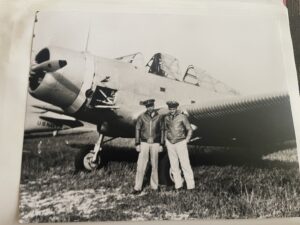
After visiting with my great grandmother, my mom would then drive us down to PCH and up to Malibu where we would have something to eat at The Sea Lion, a classic oceanfront joint that became a legend in its own right. After nearly a century on the planet, my great grandmother died as the 1970s came to a close and with her passing our trips to pay homage to the woman who proudly carried her son’s torch since the day his life was extinguished fighting the Japanese in the deep Pacific came to an end. But by the early 1980s, I was finding my way back into LA and into my own adventures that would span more than a quarter of a century, rediscovering the places my mother had shown us and making my own stamp around the City of (Fallen) Angels.
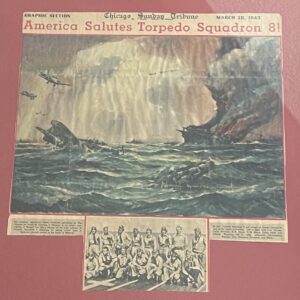
In a way, my own turn, churn and burn in LA was my own torpedo plane run, one made alongside a squadron of fellow ink-slingers; hard-drinking and women-chasing writers intent on blowing shit up (figuratively, with words, of course) and perhaps ourselves as well in the process (well, our livers anyway, and perhaps our relationships with our ladies). But that’s another story.
With the arrival of the 80th anniversary of my Uncle Buddy’s death and the doomed-but-decisive mission of Torpedo Squadron 8, I consider what’s left of America today and ponder what my great uncle would make of it? If I no longer recognize so much of the nation of my youth and that which I reported on in my early career as a print journalist, what would the man who slipped into the cockpit of that slow-flying Devastator without any hesitation, knowing what the likely odds were, think of the country today?
I don’t know what my Uncle Buddy’s politics were by 1942, but I suspect that he, along with my great grandparents and his sisters, was an FDR Democrat. He was solidly white working-class, and I know my great grandmother wasn’t a big fan of banks or the political party that catered to them then—as they continue to do so even today.
But whether or not he was a Democrat is of little matter now, considering that FDR wouldn’t recognize the fundamentals of the nation today anymore than my Uncle Buddy would, since in fact every Democratic president from FDR up through Barack Obama could no longer make it through the primaries today on their stated positions during their campaigns, let alone emerge from the conventions nominated as their party’s general election standard-bearer. Remember, President Obama declared that marriage was between a man and woman and he supported the death penalty. I don’t recall his position in 2007-2008 on men who get pregnant.
So, I wonder what my Uncle Buddy would think about a nation today where a Supreme Court nominee, and subsequently confirmed justice to the High Court, refused to answer the question from a senator during her confirmation hearings of just what defines a woman. “Vagina” would have sufficed just fine, a lovely word describing that beautiful fertile crescent that I know my Uncle Buddy was well acquainted with before his untimely death, and yet in 2022 America even speaking basic biological truth is verboten.
I wonder what he would think of the ‘Drag Queen Story Hour’ for American children that are now ubiquitous across the nation? Or the so-called ‘transition closets’ for pre-pubescent children that are being installed in public schools so ‘teachers’ can help Jack become Jill, his parents be damned? I wonder what he would think of the chemical castration and radical mastectomies that are being institutionally encouraged to American teens as something called “gender-affirming” medical procedures before they qualify for a driver’s license.
I wonder what my Uncle Buddy would think of a federal government that has eliminated the former borders of America and in the process—and by absolute design—triggered an unrelenting wave of migration into a disintegrating ‘United States’ to compete with Americans for every resource needed for any kind of quality of life; from fair employment to affordable housing, from fresh water supplies to reliable electricity.
And I wonder what he would think of the brass-grabbing generals in the Pentagon like Chairman of the Joint Chiefs Mark Milley, who parade about Washington D.C. festooned with so many ribbons and medals they look like a Chinese knock-off of Muammar Gaddafi as they relentlessly plan and push for ever more undeclared wars without end and the ‘defense’ budgets that go along with them.
As I consider the succession of wars without a real definition of a feasible intended outcome or even a modestly successful end that have defined the foreign policy backdrop of not only my lifetime but indeed the American Empire’s global adventurism since 1945, I wonder what my Uncle Buddy would think of a Congress that has effectively surrendered its Constitutional war-making authority to the Chief Executive alone, abrogating its most solemn responsibility and in the process steadily building an Imperial America. A nation-turned-empire that is now fighting and/or preparing to fight everywhere, but hasn’t declared a war since 1941.
And I wonder what he would think of Amber, a white chick from Colorado recently graduated from university that I met one night through a friend in an old favorite bar of mine two decades ago, who earnestly told me over what had been an engaging conversation about America’s foreign policy debacles that most of the men who served and died in World War II were poor peoples of color. I can’t remember if I was drunk yet, but if I was, her sheer ignorance was enough in that moment to shock me back to functional sobriety.
“The ‘poor’ part is relatively true,” I told her. “The rest of it is simply empirically false, and quite frankly, offensive.” I explained that America at the advent of World War II was about ninety-percent white and its military, while sadly segregated, was overwhelmingly white, particularly its combat forces. As were its casualties.
She told me, with all the Zen-like delivery of a Manson Family girl, that that wasn’t true at all, but rather an institutional myth manufactured to satisfy white America’s societal desires for self-contentment and security. Again, Amber was as white as the new fallen snow and a recent university graduate from Colorado.
I asked her what history books she had to read to complete her undergraduate degree.
She didn’t miss a beat, offering with a mild shrug: “The history books are being rewritten.”
Well, she was certainly right about that anyway. I recall it devolved rather quickly from there and ended rather ceremoniously with her unloading the mic-drop that is now so ubiquitous: she called me a “racist” and walked away. I can say that was a notable night of my life in a bar making time with a woman that was memorable for its unexpected turn but not my loss at all.
And yet her proudly emphatic historical illiteracy was a portent of an age to come.
So, as I think about it all now, I wonder that if my Uncle Buddy knew then what America would become, would he ever have enlisted?
Indeed, on June 4, 1942, would he ever have got into that plane?
Well, I suspect that he still would have and for all the right reasons.
I’m just sorry that the nation he and his compatriots did it all for is now as gone as they are.


